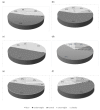Physical Fitness of School-Age Children after Cancer Treatment
- PMID: 31018493
- PMCID: PMC6518261
- DOI: 10.3390/ijerph16081436
Physical Fitness of School-Age Children after Cancer Treatment
Abstract
The aim of the study was to assess physical fitness of school-age children after cancer treatment. The study was comprised of one hundred and fifty six children-children after cancer treatment (n = 71, mean age 11.22 ± 3.11 years) vs. healthy children previously untreated for cancer (n = 85, mean age 10.71 ± 1.22 years). Physical fitness was assessed indirectly based on a ball throw (assessment of strength, coordination, and upper limb speed), long jump (assessment of jumping ability, speed, and coordination), and a 60 m run (assessment of speed). The analysis was performed based on the Student's t-test for independent samples and the analysis of variance and the post-hoc least significant difference test (LSD test). Children from the study group threw the ball closer and had shorter long jump performance compared to the control group, i.e., 12.93 [m] vs. 19.79 [m], respectively (p < 0.001) and 2.46 [m] vs. 2.70 [m], respectively (p = 0.02). However, their mean running time was longer, i.e., 13.33 [s] vs. 11.73 [s], respectively (p = 0.01). Division according to sex showed additionally significantly shorter ball throw distance in the study group in both girls (p = 0.001) and boys (p < 0.001), significantly shorter jump length in the group of girls (p = 0.01), and significantly longer running time in the group of boys (p = 0.04). Children treated for cancer are characterized by decreased physical fitness, and motor ability is sex-dependent. Both groups showed decreased strength, coordination, and upper limb speed. Additionally, worse jumping ability was found in girls whereas decreased speed was observed in boys.
Keywords: cancer; child health; physical activity; physical fitness.
Conflict of interest statement
The authors declare no conflict of interest.
Figures




References
MeSH terms
LinkOut - more resources
Full Text Sources
Medical

